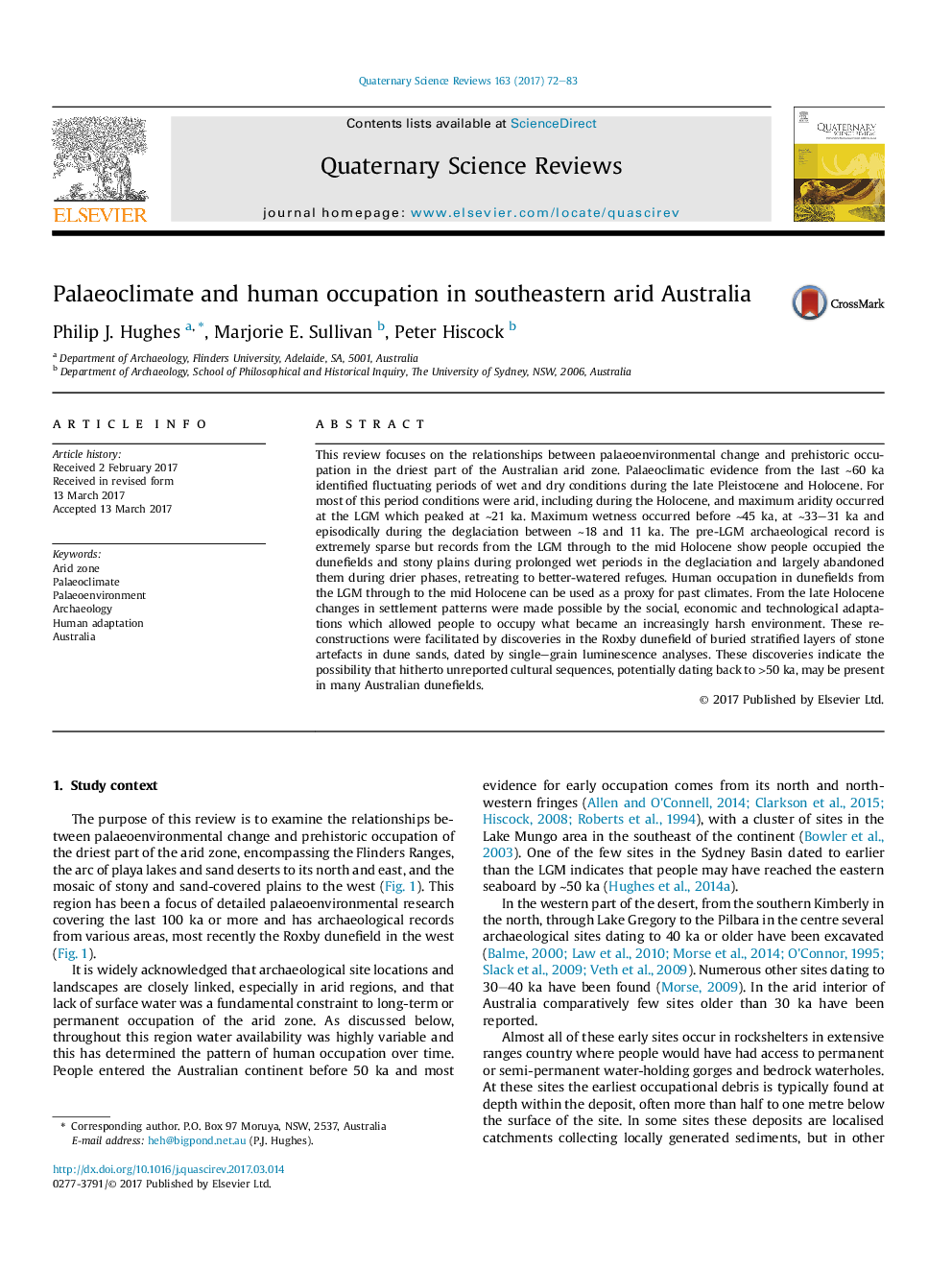| کد مقاله | کد نشریه | سال انتشار | مقاله انگلیسی | نسخه تمام متن |
|---|---|---|---|---|
| 5786769 | 1640772 | 2017 | 12 صفحه PDF | دانلود رایگان |
عنوان انگلیسی مقاله ISI
Palaeoclimate and human occupation in southeastern arid Australia
ترجمه فارسی عنوان
اشغال پائئوسکلیمات و انسان در جنوب شرقی استرالیا
دانلود مقاله + سفارش ترجمه
دانلود مقاله ISI انگلیسی
رایگان برای ایرانیان
کلمات کلیدی
موضوعات مرتبط
مهندسی و علوم پایه
علوم زمین و سیارات
زمین شناسی
چکیده انگلیسی
This review focuses on the relationships between palaeoenvironmental change and prehistoric occupation in the driest part of the Australian arid zone. Palaeoclimatic evidence from the last â¼60 ka identified fluctuating periods of wet and dry conditions during the late Pleistocene and Holocene. For most of this period conditions were arid, including during the Holocene, and maximum aridity occurred at the LGM which peaked at â¼21 ka. Maximum wetness occurred before â¼45 ka, at â¼33-31 ka and episodically during the deglaciation between â¼18 and 11 ka. The pre-LGM archaeological record is extremely sparse but records from the LGM through to the mid Holocene show people occupied the dunefields and stony plains during prolonged wet periods in the deglaciation and largely abandoned them during drier phases, retreating to better-watered refuges. Human occupation in dunefields from the LGM through to the mid Holocene can be used as a proxy for past climates. From the late Holocene changes in settlement patterns were made possible by the social, economic and technological adaptations which allowed people to occupy what became an increasingly harsh environment. These reconstructions were facilitated by discoveries in the Roxby dunefield of buried stratified layers of stone artefacts in dune sands, dated by single-grain luminescence analyses. These discoveries indicate the possibility that hitherto unreported cultural sequences, potentially dating back to >50 ka, may be present in many Australian dunefields.
ناشر
Database: Elsevier - ScienceDirect (ساینس دایرکت)
Journal: Quaternary Science Reviews - Volume 163, 1 May 2017, Pages 72-83
Journal: Quaternary Science Reviews - Volume 163, 1 May 2017, Pages 72-83
نویسندگان
Philip J. Hughes, Marjorie E. Sullivan, Peter Hiscock,
